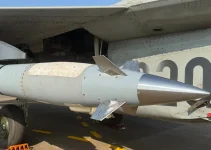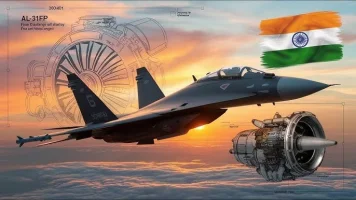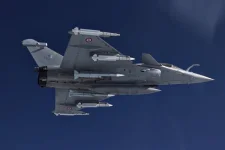- Views: 2K
- Replies: 11
The Indian Air Force (IAF) is actively developing an innovative operational strategy called the "Wolf Pack" to enhance its air combat capabilities. This forward-thinking approach combines advanced technology with new tactics, creating a connected battlefield system.
The concept centres around advanced manned fighter jets, termed the "Wolf," leading a coordinated group—the "Pack"—comprising various manned and unmanned aircraft, helicopters, and advanced munitions.
Still under development as of April 2025, this strategy highlights the IAF's move towards becoming a fully networked force, capable of handling diverse roles in complex airspace environments, particularly addressing the challenges of potential two-front conflicts.
In the Wolf Pack model, the "Wolf" role is assigned to sophisticated manned aircraft. Initially, this includes 4.5th-generation jets like the Rafale and the soon-to-be-delivered Tejas Mk1A. Current platforms like the Su-30 MKI are also being upgraded for this role. Eventually, the 5th-generation Advanced Medium Combat Aircraft (AMCA), expected around the mid-2030s and currently progressing on schedule, will take on this command function.
These lead aircraft, equipped with modern radars (like AESA) and secure data links, will act as airborne command centres. They will use their superior situational awareness to direct the accompanying "Pack" elements while engaging critical targets themselves, ensuring human oversight remains crucial in dynamic combat situations. This integration of manned and unmanned platforms, known as Manned-Unmanned Teaming (MUM-T), is a growing trend globally.
The true strength of the Wolf Pack concept lies in the diverse assets forming the "Pack." This group is designed to overwhelm adversaries through coordinated action, numbers, and adaptability. It includes:
- Manned Aircraft: Existing fighters like the Mirage 2000 could provide additional combat power or specialized electronic warfare support.
- Unmanned Aircraft: Systems like the DRDO's Rustom drones for surveillance and the developmental Ghatak stealth combat drone (UCAV), which recently began initial development phases pending full funding, are intended for tasks like reconnaissance or striking targets deep in enemy territory. The HAL CATS Warrior "loyal wingman" drone, showcased in February 2025, is a key part of this, designed to fly alongside manned jets for various support and strike missions.
- Helicopters: Attack helicopters like the HAL Prachand and Apache can provide close air support coordinated with the overall air operation.
- Advanced Munitions: Indigenous weapons like the Astra air-to-air missile and RUDRAM anti-radiation missile, launched from both manned and unmanned platforms, provide precision strike capabilities.
- Loitering Systems: Assets such as the Nagastra-1 and CATS ALFA-S swarm drones offer the ability to wait near target areas before attacking, allowing for greater tactical flexibility.
The Wolf Pack strategy is a key part of the IAF's broader plan to modernize and reach a strength of 42 squadrons, deemed necessary to effectively manage the challenges posed by potential threats from both Pakistan and China.
Facing advanced aircraft like China's J-20 stealth fighters fielded by the People's Liberation Army Air Force (PLAAF) and modernizing fleets in the Pakistan Air Force (PAF), the IAF sees the Wolf Pack, with its emphasis on MUM-T and network-centric operations, as a vital force multiplier.
This approach aims to maximize the effectiveness of its aircraft, including the incoming Tejas Mk1A fighters (with initial deliveries anticipated by late 2025), compensating for numerical gaps and boosting overall combat potential in India's complex security landscape.



